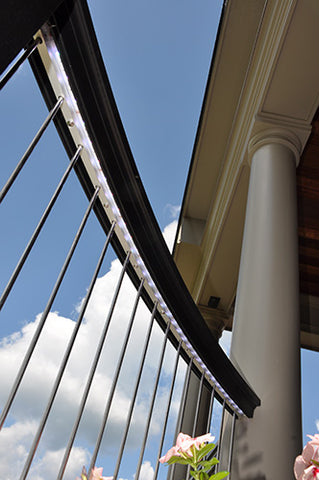About InvisARail® Deck Railing System


The patented InvisARail® deck railing system is the go-to choice for contractors and consumers looking for something better than horizontal or vertical cable deck railing. Its founder invented InvisARail® out of necessity in 2006 and patented it shortly after. Looking for some great new deck railing ideas? There's only one InvisARail®.
Since the company that founded InvisARail® was first a successful deck company that specialized in curved railings, the InvisARail® in-fill system had to work with this feature, as well. Horizontal cable railing was our choice initially over glass because of the constant cleaning and the lead-time required for ordering. However, the horizontal cable railing limitations could not accommodate curves without going vertical.
Add to that the safety factor. Push back from some clients and municipalities concerning the "Ladder Effect" of horizontal deck cable railing was also a dilemma (i.e., kids using the horizontal deck cable railing as steps). Horizontal cable railing installation means many, many parts... parts for corners, intersections, stair pitches, termination points, and on. Not to mention the end newel posts needed to withstand the 3,000+ LBS of tension.
The cost and installation aggravation of existing vertical cable railing systems was found to be prohibitive and was just not an option. All bad options for deck cable railing.
Our goal was to counter all of these issues by making deck railing that was "Simple, Versatile and Affordable," and that's just what we did. It's easy to make something complicated, but it's hard to make something simple. Through our research, development and field- testing of the InvisARail® vertical in-fill deck railing system, that’s just what we did… made it contractor-friendly and simple.
As a result, we were able to narrow the system down to just two parts that work for level and stair pitches at any angle from 0 up to 40 degrees, and curved railings, as well as a matching gate (with the help of our "Gate Support.") That's right, just two parts...How simple is that!?
